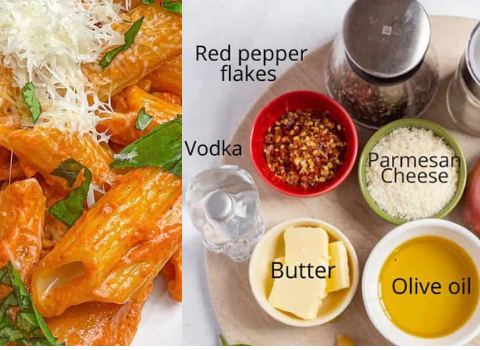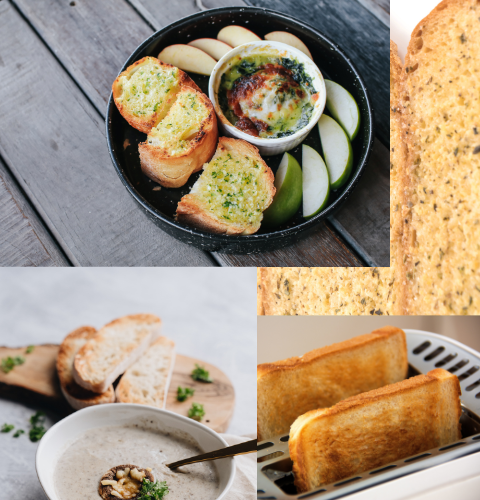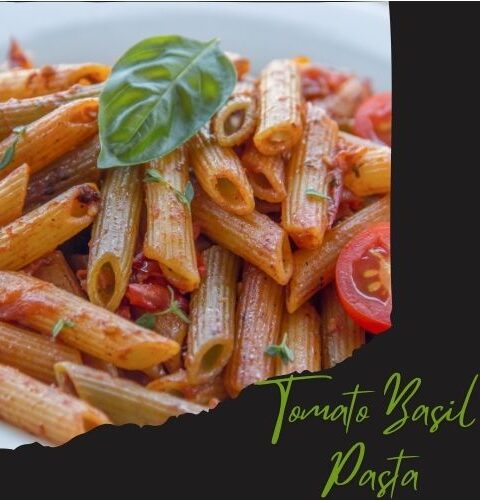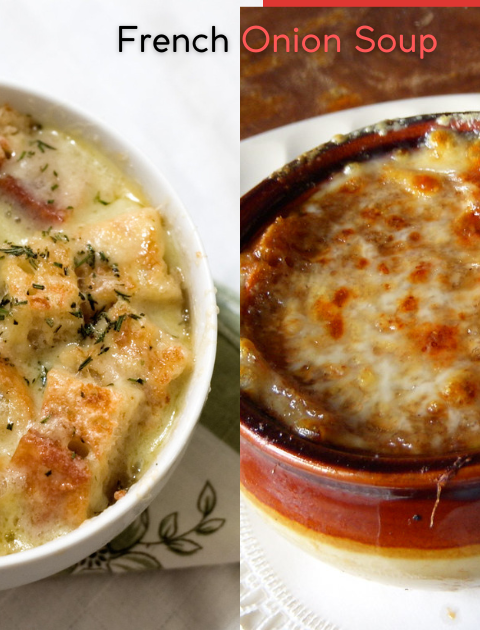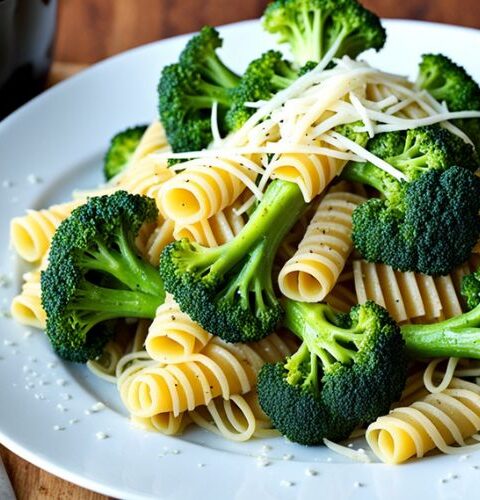Butternut squash ravioli, a beloved pasta dish with its origins in North America, is a culinary masterpiece that combines the sweetness of roasted squash with the richness of creamy cheese. Origins vary, with some claiming it originated in the Lombardy region or the Emilia-Romagna region. Despite its elusive origins, butternut squash ravioli is a comforting and sophisticated pasta dish that impresses with its elegant presentation and comforting flavors.
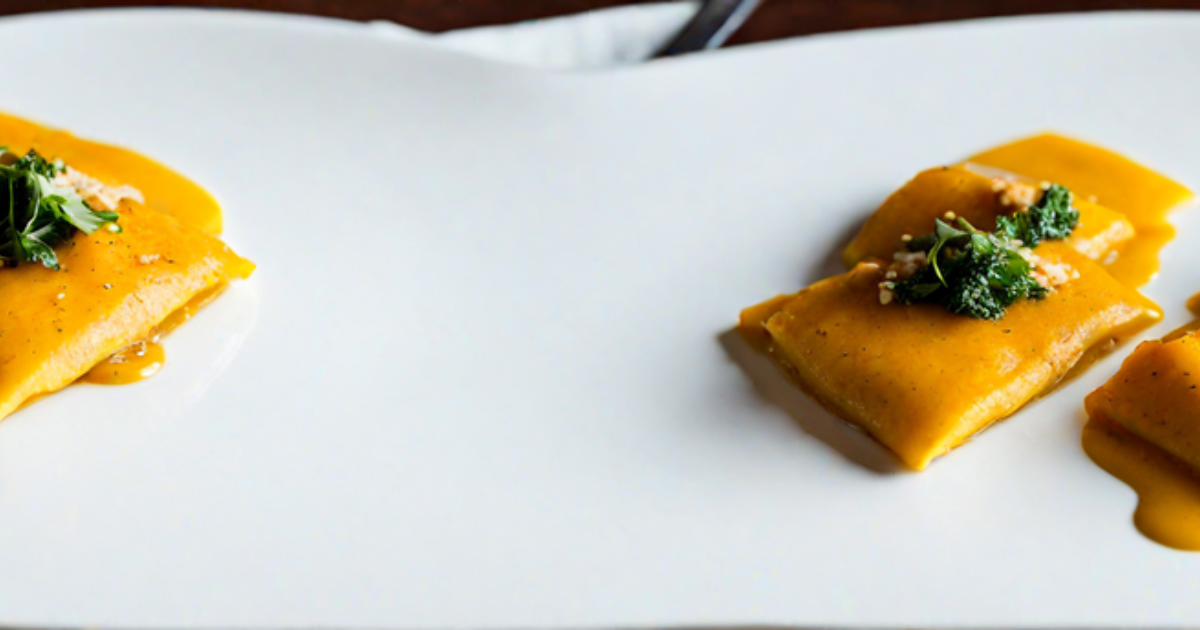
Some homemade butternut squash ravioli dough:
Classic Homemade Ravioli Dough:
This traditional recipe uses basic ingredients and yields a versatile pasta dough. Here’s how to make it:
- In a large bowl, place 5 cups of flour.
- Make a well in the center and add the beaten eggs, water, and oil.
- Stir together to form a ball.
- Turn the dough out onto a floured surface and knead until smooth and elastic (about 4-6 minutes), adding more flour if necessary.
- Cover the dough and let it rest for 30 minutes before rolling it out for the ravioli
Some other ideas for ravioli dough:
1. 30-Minute Homemade Ravioli Dough:
- This quick and easy recipe yields soft and firm ravioli dough. It uses “00” flour (also known as pizza flour) for a silky texture. Here’s how to make it:
- Pour “00” flour onto a wooden cutting board or clean countertop and make a well in the center.
- Add the whole egg and egg yolk to the well.
- Gently mix in the eggs, pulling in the flour a little at a time until most of the flour is incorporated.
- Gradually add 1 ¼ cup of water, saving the last ¼ cup if necessary.
- Continue adding flour and water until the dough forms a soft, smooth ball.
- Knead the dough until elastic and slightly sticky.
- Cover the dough with a damp towel or plastic wrap and let the dough rest for 15-20 minutes.
- Roll out the dough, fill it with your favorite ravioli filling, and enjoy.
2. Vegan Ravioli Dough:
- If you prefer an eggless and dairy-free version, try this vegan ravioli dough:
- Place 2 cups of all-purpose flour in a large bowl and add 1 teaspoon of salt.
- Gently pour in 2 tablespoons of olive oil and ¾ cup of cold water.
- Mix with a spoon until the dough starts to form a ball.
- Turn the dough out onto a floured surface and knead until smooth.
3. Customize your dough:
- Feel free to experiment! You can adjust the texture by changing the type of flour (such as using semolina flour) or adding herbs and spices to the dough.
- Remember to rest the dough before rolling it out. This allows the gluten to relax and makes it easier to work with.
- Once you’ve made your ravioli dough, you can cut it into squares or circles, fill it with your favorite ingredients (butternut squash, cheese, spinach, etc.), and cook it in boiling water until soft. Top with your choice of sauce, and you’ll have a delicious homemade ravioli feast! 🍝
Butternut squash ravioli filling:
Making butternut squash ravioli from scratch is a fun culinary adventure. Let’s dive into some delicious filling recipes for these delicious pasta pockets:
1. Butternut Squash Ravioli with Sage Butter Sauce:
-
Ingredients:
- 2 cups roasted butternut squash (peeled and chopped)
- 1 small onion (chopped)
- 3 cloves garlic (peeled)
- 1/4 cup grated Parmesan cheese
- Salt and pepper, to taste
- A pinch of nutmeg
-
Instructions:
- In a food processor or blender, combine cooked squash, onion, garlic, Parmesan cheese, salt, pepper, and nutmeg. Pulse until smooth.
- Cover the filling and place it in the refrigerator until you are ready to use it to fill the ravioli.
Butternut Squash Ricotta Filling:
- Ingredients:
- 1 1/2 cups roasted butternut squash flesh
- 1/2 cup ricotta cheese
- Freshly grated nutmeg (as per taste)
- Fresh Parmesan cheese (optional)
- Salt and pepper, to taste
- Instructions:
- Roast butternut squash until completely tender (about 40 minutes at 400 °F).
- While the squash is cooling, make the pasta dough (you can find the recipe online).
- In a food processor, pulse the walnuts until they are finely ground.
- Add roasted squash flesh, roasted sage, shallots, garlic, apple cider vinegar, nutmeg, salt, and pepper to a food processor. Process until the filling is smooth and creamy.
- Roll out the pasta dough, fill each ravioli with about 1 tablespoon of the butternut squash filling, and cook according to the method 23 of your choice.
Remember, making and filling homemade pasta is a labor of love, but the end result is incredibly rewarding. Whether you serve your ravioli with sage and white wine sauce or a simple drizzle of olive oil and Parmesan cheese, it’s sure to be a comforting and delicious meal. Very hungry! 🍝🎃
What are some other types of ravioli?
Ravioli is a versatile pasta dish that comes in a variety of delicious forms. Here are some other types of ravioli you might enjoy:
1. Spinach and Ricotta Ravioli:
These ravioli are filled with a combination of sauteed spinach, creamy ricotta cheese, and Parmesan. They are often served with a simple tomato sauce or a sage-infused brown butter sauce.
2. Lobster Ravioli:
For seafood lovers, the lobster ravioli is a treat. The filling usually consists of lobster meat, ricotta, and herbs. A light cream sauce or tomato-based sauce complements the delicate flavor.
3. Mushroom Ravioli:
Mushroom lovers rejoice! Mushroom ravioli has a filling made from sautéed mushrooms, garlic, and herbs. Pair it with a truffle-infused cream sauce for an earthy and luxurious experience.
4. Pumpkin Ravioli:
Like butternut squash ravioli, pumpkin ravioli is a fall favorite. A sweet and savory filling is made from roasted pumpkin or pumpkin puree combined with spices like nutmeg and cinnamon.
5. Cheese Ravioli:
Sometimes simplicity is best. Cheese ravioli can be filled with a variety of cheeses, such as ricotta, mozzarella, or a combination of cheeses. Serve them with your favorite marinara sauce or pesto.
6. Meat Ravioli:
These hearty ravioli are filled with a mixture of ground meat (such as beef, pork, or veal), herbs, and sometimes cheese. They pair well with a rich tomato-based sauce.
7. Wild Mushroom and Truffle Ravioli:
Elevate your ravioli experience with a filling of wild mushrooms, truffle oil, and Parmesan. A drizzle of olive oil or a light cream sauce lets the flavors shine.
Remember, ravioli is all about creativity, so feel free to experiment with different fillings and sauces to suit your taste! 🍝
Butternut Squash Ravioli Sauce recipe ideas:
Sure! Butternut squash ravioli is a delightful dish, and there are many creative ways to enjoy it. Whether you’re looking for a classic sauce or a unique twist, here are some recipe ideas to enhance your butternut squash ravioli experience:
1. Sage Brown Butter Sauce:
This simple yet flavorful chutney includes butter, minced garlic, sage leaves, and black pepper. The result is a rich and creamy topping that pairs beautifully with butternut squash ravioli. Here’s how to make it:
- Melt butter in a pan over medium heat.
- Add minced garlic and cook until fragrant.
- Add sage leaves and cook till they start to brown.
- Season with salt and pepper.
- Serve over butternut squash ravioli or any pasta dish. It also complements grilled vegetables and grilled meats.
2. White Wine Sauce:
a creamy and delicious white sauce made with white wine, heavy cream, and Parmesan cheese. It adds a touch of elegance to your ravioli.
- In a saucepan, boil the white wine until it is reduced.
- Add heavy cream and grated Parmesan.
- Season with salt and pepper.
- Drizzle over butternut squash ravioli for a luxurious treat .
3. Creamy Alfredo Sauce:
Alfredo sauce is an excellent choice for pasta dishes. Make it extra fun by serving it with butternut squash ravioli.
- In a saucepan, melt the butter and add the minced garlic.
- Stir in heavy cream and grated Parmesan.
- Season with salt, pepper, and a pinch of nutmeg.
- Pour it over your ravioli and enjoy the creamy goodness.
4. Butternut Squash Sauce:
Why not double the flavor of butternut squash? Make a sauce using roasted butternut squash, garlic, and a splash of vegetable broth or cream. Blend until smooth, and toss with your ravioli. Top 2 with grated parmesan and fresh herbs.
5. Pesto:
For a fresh and vibrant option, drizzle your ravioli with basil pesto. The herbaceous flavors complement the sweetness of the squash. You can make your own pesto or use store-bought 1.
6. Toasted Walnut and Sage Sauce:
Toasted walnuts and sage add crunch and earthiness to your ravioli. Saute chopped sage leaves and walnuts in butter until fragrant. Toss with the cooked ravioli and finish with a sprinkling of Parmesan 1.
7. Maple-Balsamic Glaze:
Combine maple syrup and balsamic vinegar to make a sweet and tangy glaze. Drizzle it over your ravioli for a unique twist.
Remember, the beauty of ravioli lies in its versatility. Feel free to experiment with these sauces or invent your own! Very hungry! 🍝🎉
Squash ravioli cooking tips:
Sure! Here are some cooking tips to make sure your butternut squash ravioli comes out perfectly:
1. Roast the vegetables ahead of time.
- Roast the butternut squash, shallots, garlic, and sage in advance. This step enhances the flavor and texture of the filling. When the roasted squash has time to cool, the filling is thick and creamy.
- Keep the roasted vegetables aside to cool for at least 30 minutes.
2. Keep the pasta dough covered.
- Homemade pasta dough dries quickly. When you’re not actively working with it, keep it covered in plastic wrap to prevent it from drying out too much.
3. Get Scrappy:
- Making ravioli involves a bit of craftiness. Carefully fill and punch each piece of butternut squash ravioli. Take your time and enjoy the process.
4. Cooking Ravioli:
- To cook the ravioli, bring a pan of lightly salted water to a boil.
Drop the filled ravioli into the boiling water a few at a time.
Cook until they float to the top, which usually takes about 2 minutes.
Drain the ravioli and transfer them to your favorite sauce or skillet.
5. Freezing Ravioli:
- If you want to freeze the ravioli, line a baking sheet with parchment paper.
Arrange a layer of homemade ravioli on a sheet.
Once completely frozen, transfer them to a reusable plastic bag for storage.
Remember, making butternut squash ravioli from scratch is a labor of love, but the results are worth it! Enjoy your delicious homemade ravioli.

Butternut squash ravioli
Equipment
- Large mixing bowl
- Rolling Pin
- Ravioli mold (optional)
- Large pot
- skillet
- Slotted spoon
- Blender or food processor
Ingredients
For the Ravioli Filling:
- 1 medium-sized butternut squash peeled and diced
- 2 tablespoons olive oil
- Salt and pepper to taste
- ¼ teaspoon nutmeg freshly grated
- ¼ cup grated Parmesan cheese
- ¼ cup ricotta cheese
- 1 garlic clove minced
- ¼ teaspoon dried sage
For the Pasta Dough:
- 2 cups all-purpose flour
- 2 large eggs
- ½ teaspoon salt
Instructions
Making the Ravioli Filling:
- Preheat your oven to 400°F (200°C).
- Place the diced butternut squash on a baking sheet. Drizzle with olive oil and season with salt, pepper, and nutmeg.
- Roast the squash in the preheated oven for about 25-30 minutes, or until tender and caramelized.
- Once roasted, transfer the squash to a blender or food processor. Add Parmesan cheese, ricotta cheese, minced garlic, and dried sage. Blend until smooth and creamy. Adjust seasoning if necessary.
Making the Pasta Dough:
- In a large mixing bowl, combine the all-purpose flour and salt.
- Create a well in the center of the flour mixture and crack the eggs into it.
- Using a fork, gradually incorporate the flour into the eggs until a dough forms.
- Knead the dough on a lightly floured surface for about 5-7 minutes, or until it becomes smooth and elastic. Wrap the dough in plastic wrap and let it rest for 30 minutes.
Assembling the Ravioli:
- Divide the rested dough into smaller portions and roll each portion into thin sheets using a rolling pin. Alternatively, you can use a pasta machine for this step.
- Place a sheet of pasta onto a lightly floured surface or a ravioli mold.
- Spoon small dollops of the butternut squash filling onto the pasta sheet, leaving space between each dollop.
- Place another pasta sheet on top of the filling and press down gently around each mound of filling to seal the ravioli.
- Use a ravioli cutter or a knife to cut out individual ravioli squares. Press the edges firmly to ensure they are sealed.
- Repeat the process with the remaining pasta dough and filling.
Cooking the Ravioli:
- Bring a large pot of salted water to a boil.
- Carefully drop the ravioli into the boiling water and cook for about 3-4 minutes, or until they float to the surface.
- While the ravioli are cooking, heat a skillet over medium heat. Add a drizzle of olive oil.
- Using a slotted spoon, transfer the cooked ravioli to the skillet. Cook for an additional 1-2 minutes, or until they are lightly golden and crispy on the edges.
- Serve the Butternut Bliss Ravioli hot, garnished with additional Parmesan cheese and a sprinkle of freshly chopped sage if desired.
Notes
- Carbohydrates: 57g
- Protein: 14g
- Fat: 12g
- Saturated Fat: 4g
- Cholesterol: 120mg
- Sodium: 560mg
- Potassium: 560mg
- Fiber: 5g
- Sugar: 3g
- Vitamin A: 210% DV
- Vitamin C: 30% DV
- Calcium: 20% DV
- Iron: 25% D
-
Notes
- Experiment with different herbs and spices in the filling to customize the flavor profile of your ravioli.
- You can make the pasta dough and filling in advance and store them separately in the refrigerator until ready to use.
- Leftover ravioli can be stored in an airtight container in the refrigerator for up to 2 days, or frozen for longer storage. Reheat gently in boiling water or in a skillet with a little olive oil.
Butternut squash ravioli, step-by-step
Step 1: Gather your ingredients
Before diving into the process, make sure you have all the necessary ingredients.
- Fresh butternut squash
- Ricotta cheese
- Parmesan cheese
- Nutmeg and cinnamon
- Brown sugar
- Salt
- All-purpose flour
- Eggs
- Butter
- Fresh sage leaves
Step 2: Roast the butternut squash
- Preheat your oven and roast the butternut squash until tender. Once done, scoop out the meat and mash it into a smooth puree. Add the ricotta cheese, Parmesan cheese, nutmeg, cinnamon, brown sugar and a pinch of salt. Mix well to make a delicious filling.
Step 3: Prepare the pasta dough
- In a large mixing bowl, combine the all-purpose flour and eggs. Knead the mixture until it forms a smooth and elastic dough. Let it rest for about 30 minutes, allowing the gluten to rest. This step ensures a soft dough to roll out your ravioli.
Step 4: Roll out the pasta sheets
- Using a pasta machine or rolling pin, roll the dough into a thin sheet. Aim for a uniform thickness to ensure evenly cooked ravioli. If using a pasta machine, gradually reduce the thickness setting until you achieve the desired thinness.
Step 5: Assemble the ravioli
- Place small dollops of butternut squash filling on one sheet of pasta, leaving enough space between each mound. Brush the edges with water to help seal the ravioli. Gently place another sheet of pasta on top, pressing down around each filling to remove air pockets. Use a ravioli cutter or a sharp knife to cut individual ravioli squares.
Step 6: Crimp the edges
- To ensure a secure seal, use a fork to crimp the edges of each ravioli. This not only adds a decorative touch but also prevents the filling from leaking during cooking.
Step 7: Cook the ravioli
- Bring a large pot of salted water to a gentle boil. Carefully add the ravioli and cook for a few minutes until they float to the surface and are tender. Be careful not to overcrowd the pot to prevent sticking.
Step 8: Prepare the Brown Butter Sage Sauce
- While the ravioli are cooking, melt the butter in a pan until golden brown. Add fresh sage leaves and a pinch of salt, and infuse the butter with delicious flavor.
Step 9: Toss and serve
- Once the ravioli are cooked, gently toss them in the brown butter and sage sauce until evenly coated. Serve the butternut squash ravioli immediately, garnished with extra Parmesan cheese and a sprinkle of freshly ground black pepper.
Step 10: Enjoy!
- Sit back, savor the fruits of your labor and enjoy the delightful combination of sweet butternut squash, creamy cheese filling, and rich, nutty notes of brown butter.
some other types of pasta dishes:
- Pasta is a versatile canvas for creating a variety of delicious dishes. Here are some popular pasta recipes from Italy and beyond:
1. Agnoli Mantovani in Brodo (Lombardy):
a Mantua specialty consisting of agnolini dumplings served in a savory broth.
2. Agnolotti al Plein (Piedmont):
Agnolotti dumplings filled with Piedmontese ragu sauce.
3. Anelletti al Forno (Sicily):
Palermo baked pasta dish made with Anelletti pasta, eggplant, meat sauce, cheese and peas.
4. Bucatini all’Amatriciana (Lazio):
Traditional Amitris dish with bucatini pasta, tomatoes, guanciale (seasoned pork jowl), pecorino romano cheese and black pepper.
5. Busiate con Pesto alla Trapanese (Sicily):
A specialty of trappa that consists of basciate pasta with pesto alla trapanese (made from garlic and walnuts).
6. Cacavele alla Sorrentina (Campania):
Cacavelle pasta is filled with tomato sauce, mozzarella cheese, ground beef, and ricotta cheese.
7. Notch:
soft-dough dumplings made from potatoes or other ingredients. They pair well with various sauces.
8. Four Cheese Pasta:
an innovative dish made with four different types of cheese: Parmesan, Cheddar, Brie, and Emmental.
9. Pasta Carbonara:
Roman classic with bucatini or spaghetti, guanciale, egg, pecorino romano cheese, and black pepper.
10. Bigoli in Salsa (Veneto):
Whole-wheat bigoli pasta is served with a sauce made from salted fish and onions.
Remember, the possibilities are endless when it comes to pasta dishes. Explore different shapes, sauces, and regional variations to find your favorite! 🍝
Nutritional Benefits:
Butternut squash ravioli is not only delicious but also offers many health benefits. Let’s explore them:
1. Nutrient-rich filling:
- Butternut Squash Ravioli filling usually includes roasted butternut squash, which is rich in vitamins and minerals.
- Vitamin A: Butternut squash is an excellent source of beta-carotene, which the body converts into vitamin A. Vitamin A is essential for healthy vision, immune function, and skin health.
- Vitamin C: Butternut squash provides a good dose of vitamin C, an antioxidant that supports the immune system and skin health.
- Fiber: The fiber content in butternut squash aids digestion and helps maintain stable blood sugar levels.
2. Heart Health:
- Butternut squash is high in potassium, which helps regulate blood pressure. Controlling blood pressure reduces the risk of stroke and heart disease.
- The fiber in butternut squash also contributes to heart health.
3. Antioxidants:
- Butternut squash is a rich source of powerful antioxidants, including vitamin C, vitamin E, and beta-carotene.
- Antioxidants help prevent or slow cellular damage and reduce inflammation, potentially reducing the risk of chronic diseases.
4. Blood Sugar Regulation:
- The type of fiber found in butternut squash is not easily digestible. For people with diabetes, this can help prevent blood sugar levels from rising too quickly after 1 meal.
5. Weight Management:
- Butternut squash is low in calories and fat, making it an excellent addition to a balanced diet.
- Fiber content also promotes satiety, helping you feel full and satisfied.
Remember to enjoy your butternut squash ravioli in moderation as part of a varied and nutritious diet. Very hungry!🍝🎉
ravioli for dinner:
Butternut squash ravioli makes for a delightful dinner. Here are some ways to enjoy this comforting dish:
1. Butternut Squash Ravioli with Sage and White Wine Sauce:
- Ingredients:
- Butternut Squash Ravioli (store bought or homemade)
- Fresh sage leaves
- Butter
- White wine
- Parmesan cheese (for garnish)
- Instructions:
- Cook the ravioli in boiling salted water until they rise to the top.
- In a separate skillet, melt the butter and add fresh sage leaves. Allow them to simmer until fragrant.
- Pour in a splash of white wine and let it reduce slightly.
- Toss the cooked ravioli in the sage and white wine sauce.
- Serve with a generous sprinkling of grated parmesan cheese.
Butternut Squash Ravioli Bake:
- Ingredients:
- Butternut Squash Ravioli
- Turkey bacon (cooked and chopped)
- Mixed vegetables (such as bell peppers, zucchini and spinach)
- Butternut Squash Sauce (made from roasted butternut squash, garlic and vegetable stock)
- Mozzarella cheese (optional, for topping)
- Instructions:
- Boil and puree the butternut squash.
- Cook the turkey bacon and cut it into bite-sized pieces.
- Saute mixed vegetables until soft-crisp.
- Layer the cooked ravioli, vegetables, and turkey bacon in a baking dish.
- Pour the butternut squash sauce over the layers.
- Top with mozzarella cheese (if desired).
- Bake in the oven at 375°F (190°C) for about 30 minutes, or until bubbly and golden brown.
Butternut Squash Ravioli with Brown Butter and Sage:
- Ingredients:
- Butternut Squash Ravioli
- Butter
- Fresh sage leaves
- Hazelnuts (toasted and chopped)
- Goat Cheese (Roughened)
- Instructions:
- Cook ravioli in boiling water until tender.
- In a separate pan, melt the butter over medium heat until golden brown (be careful not to burn it).
- Add fresh sage leaves and let them crisp.
- Toss the cooked ravioli in the brown butter and sage.
- Serve with toasted hazelnuts and crumbled goat cheese on top.
Cheese-Stuffed Butternut Squash Ravioli:
- If you prefer an easier version, cook store-bought butternut squash ravioli and serve with your favorite marinara sauce or a shower of olive oil, sea salt, and Parmesan cheese .
Remember to pair your butternut squash ravioli with a side salad or some crusty bread for a complete and satisfying dinner. Very hungry! 🍝🎉
Conclusion:
Butternut Bliss Ravioli is a tradition that celebrates comfort, flavor, and tradition. Its rich, creamy filling and tender pasta exterior remind us of the joys of good food and company. Enjoyed year-round, it leaves a lasting impression on those fortunate enough to experience its delights.
FAQ
1.What goes well with butternut squash ravioli?
- Butternut squash ravioli pairs beautifully with sage butter sauce, a sprinkle of Parmesan cheese, toasted walnuts, or a drizzle of balsamic reduction. Additionally, a simple olive oil and garlic sauce can complement its flavors well.
2.What is butternut squash ravioli made of?
- Butternut squash ravioli typically consists of a filling made from roasted butternut squash, combined with ricotta cheese, Parmesan cheese, and sometimes a hint of nutmeg or cinnamon for flavor. This filling is then enclosed in pasta dough and cooked until tender.
3.What does butternut squash taste like?
- Butternut squash has a subtly sweet and nutty flavor with hints of earthiness. It’s often compared to a combination of pumpkin and sweet potato, with a smooth and creamy texture when cooked.
4.What are 3 ways you can eat butternut squash?
- You can enjoy butternut squash in various ways:
1. Roasted: Toss cubed butternut squash with olive oil, salt, and pepper, then roast until caramelized and tender. This brings out its natural sweetness and enhances its flavor.
2.Soup: Puree cooked butternut squash with vegetable broth, onions, garlic, and your choice of herbs and spices to make a creamy and comforting soup.
3.Grilled: Slice butternut squash into thin strips, brush with olive oil, and grill until tender and slightly charred. Grilled butternut squash makes a delicious side dish or addition to salads.


